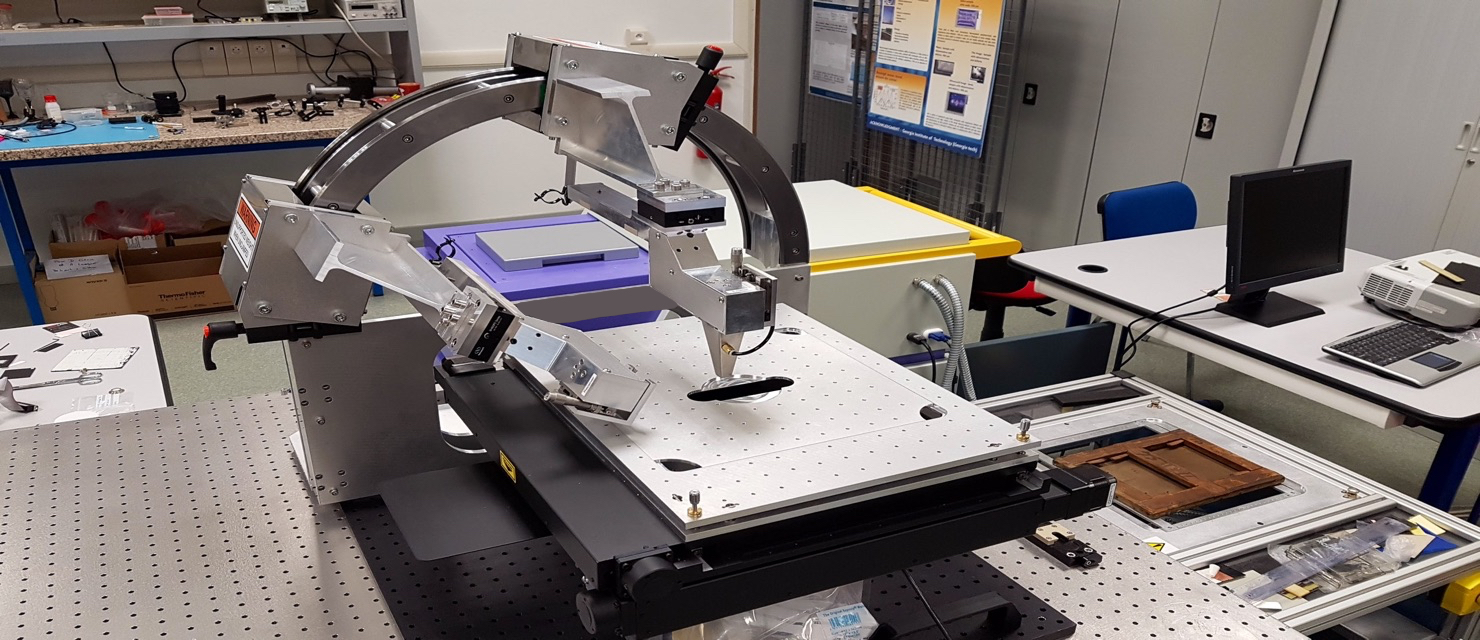Terahertz (THz) techniques are of great interest for subsurface investigation of a range of dielectric (nonconducting) materials, including coated materials, ceramics, glasses, polymers, composites, wood, paper, textiles and biomedical materials, to name a few, as well as in art conservation science. In addition, near-surface investigation of conducting materials is also possible. This includes coatings (e.g., paint, polymer, oil, oxide) on metals as well as near-surface defect formation in conducting materials (e.g., metals, carbon-fibre composites). THz approaches, in some contexts, provides advantages over alternative approaches, such as x-ray imaging or ultrasonic imaging.
Our THz laboratory is centered on a terahertz time-domain spectroscopy system that provides picosecond THz pulses at a ~100 MHz repletion rate. These short pulses provide a spectral bandwidth from ~100 GHz to 4 THz. By monitoring position-dependent changes in the reflected or transmitted THz signal, we can build up an image of the material utilizing various contrast mechanisms. For example, in the time domain in a stratified medium, due to the Fresnel coefficient associated with refractive-index variations between the layers, the detected signal will be composed of various time-delayed echoes that are detected and then disentangled to identify layer thicknesses and refractive indices. Using advanced signal-processing techniques, we can obtain in some cases layer-thickness estimates down to ~20 microns. Such thicknesses are significantly below the expected resolution based on the available bandwidth.One of our laboratory’s specific strength is our state-of-the-art ability to extract as much fine-scaled information as possible from our detected signals [16_JIRTHz]. In particular, we have been able to resolve forced delaminations in glass-fiber reinforced composites [15_CompB], to distinguish between inter- and intra-laminar defects in hybrid composites [16_CompB], to analyze the corrosion of polymer-reinforced steel [17_JSTQE], and to determine the stratigraphy of an art painting [16_OE].

- Log in to post comments
